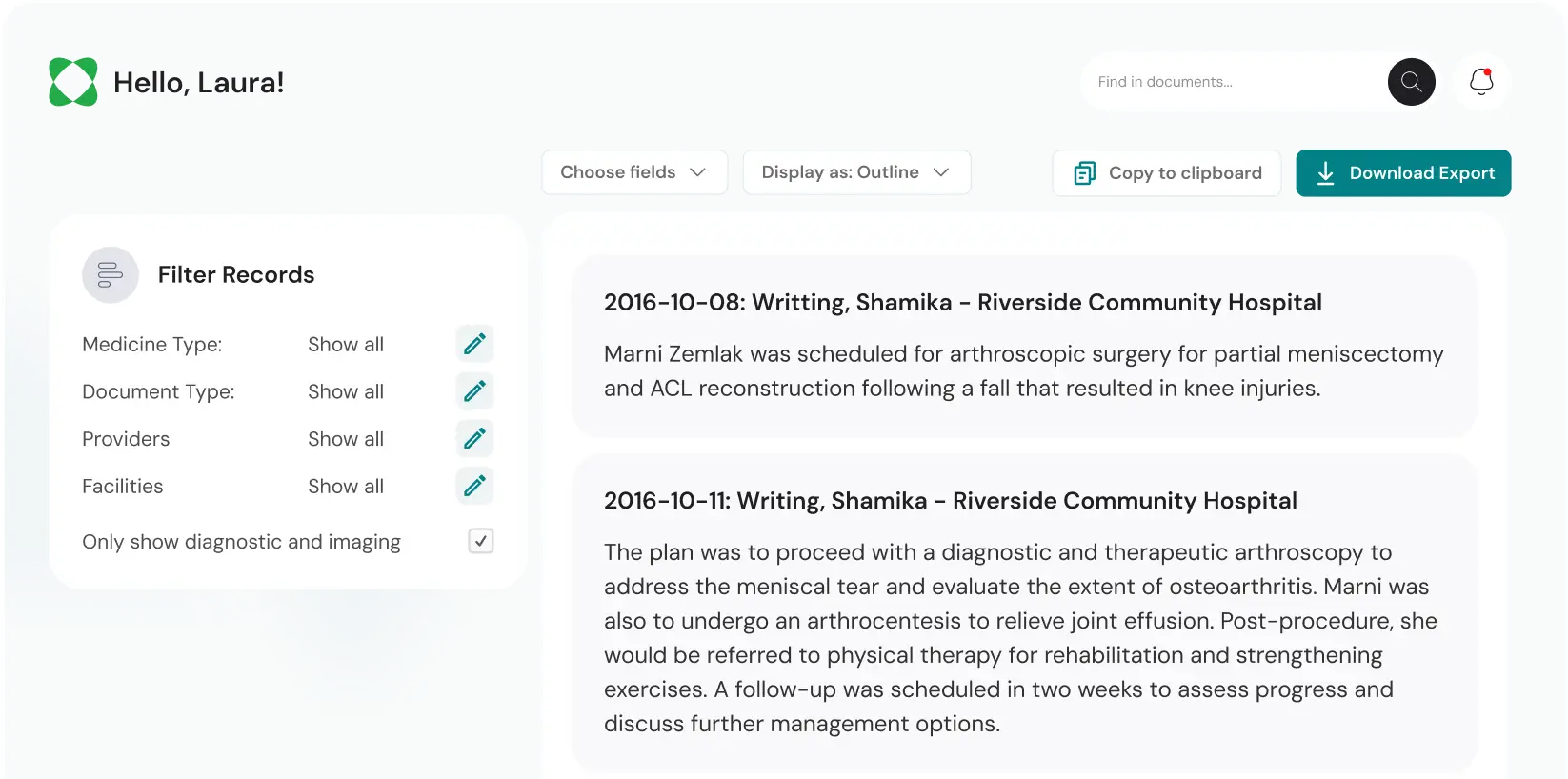Instant high-quality summaries
- Process hundreds of pages of medical records in minutes instead of hours
- Effortlessly review by comparing the summary and original document side-by-side
- Customize the summary to your specific needs, ensuring it highlights the most relevant details
- Enhance decision making with clear, concise summaries, leading to better outcomes for clients
